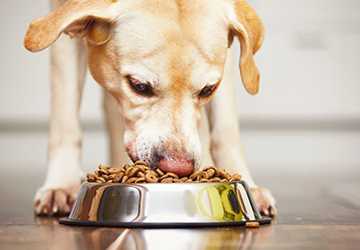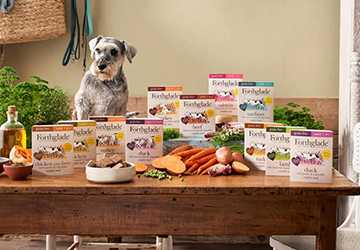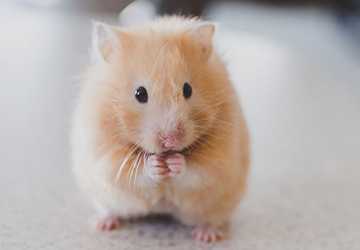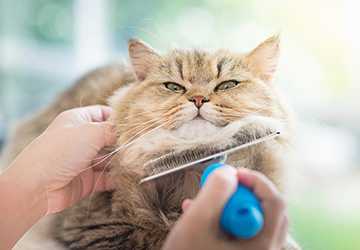The Pros and Cons of Grain-Free Pet Food
Over the past few years, grain-free pet food has become very popular, and many people have shifted to using this kind of food. Nonetheless, there is a rising controversy among veterinarians and pet nutritionists regarding grain-free pet food.
Grain-free diets have many advantages for pets, and supporters of this type of feeding state; however, the opponents claim that grains should be included in the pet's diet.

We enlighten you on the benefits and shortcomings of feeding your pet raw food so that you can make the right decision about its diet.
In this blog post, we'll explore the pros and cons of grain-free pet food so that you have the correct information to give your pet the proper diet. If you have just got a pet or are considering changing your pet's diet, this article will benefit you.
Understanding the Need for Grain-Free Pet Food
Numerous pet owners choose grain-free diets to give their pets the best diet possible. One reason for this preference is the belief that grain-free food can reduce allergens in pets.
Some pets may experience some form of intolerance or allergy to grains, which may cause skin rash, itching, stomach upsets, and gas related to grain-fed pets, especially those fed wheat or corn. Essentially, by excluding these grains from their diet, pet owners expect to minimize or eliminate these symptoms.
Furthermore, eliminating grains in diets has positive effects on pet digestion. Grains are hard to digest, and some animals develop digestion complications and other related problems.
Eliminating grains from the diet is also beneficial for digestion and nutrient intake. Some pet owners consider grain-free diets closer to the species' ancestral diets, improving the pets' physical conditions and quality of life.
The Pros and Cons of Grain-Free Pet Food
Having discussed why some people opt for grain-free diets for their pets, it is now time to discuss the pros and cons of this feeding regimen.
1. Pro: Improved Digestion
First, grain-free pet food can help solve the digestion issues pets often face. Some pets have sensitive stomachs; therefore, when fed grains, typical side effects include bloating, gas formation, and diarrhoea.
These diets remove grains from pet foods and use ingredients such as meat, vegetables, and fruits that are easy to digest, hence eradicating these digestive issues.
Grain-free pet foods also contain enhanced proteins vital for proper digestion. The above-added protein can also aid in the growth of positive gut flora, thus improving digestion.
2. Pro: Allergy Reduction
The feed produced without grains may help minimize the risk of allergies in vulnerable animals. Some animals may develop allergies or sensitivities to certain grains, resulting in symptoms such as:
● Itchy skin
● Ear infections
● Excessive paw licking
● Digestive issues
Excluding the grains mentioned above from the diet could drastically reduce the symptoms associated with pet allergies. This, of course, may improve the quality of life for the animal and the owner.
3. Con: Nutritional Imbalance
The one weakness of grain-free pet food is the possibility of an unbalanced diet. Grains can be a great way of obtaining some nutrients necessary for the body, such as fibre, vitamins, and minerals.

If these grains are excluded from the diet, the dog food must maintain the same nutrient profile as any other complete dog food.
Some pet foods with grains removed may contain very high amounts of legumes like peas and lentils in their place. Although these ingredients contain some vitamins and minerals, they are less nutrient-rich than whole grains.
4. Con: Higher Cost
Another con of grain-free pet food is that it is relatively expensive compared to other pet food available in the market. Premium ingredients like the type of meat used or unique sources of carbohydrates used to prepare these products can also raise the price.
Another factor is cost, which could be a factor for pet owners on a tight budget, especially with the newer grain-free foods being more expensive. One must consider the advantages of switching to grain-free food and the consequences that may influence the family's budget.
Take the Next Step in Your Pet's Nutrition!
Now that you know much about grain-free pet food, it is time to take action. By passing this knowledge on to the pet, who should be fed this food, they are bound to have a better life.
It would help if you began with a consultation with your veterinarian to discuss the details of your pet's nutrition and whether a grain-free diet is advisable.
One may consider subscribing to pet nutrition newsletters to receive the latest market research and information on trends.
Of course, remember that your pet's health depends on you. Start changing today and see how a well-chosen diet can improve your life!
Frequently Asked Questions
Q. Is grain-free pet food suitable for all pets?
Ans. Not necessarily. It would help if you remembered that each animal is unique and requires an individual approach; therefore, discussing the problem with a veterinarian is crucial.
Q. Can switching to a grain-free diet cause digestive issues?
Ans. Occasionally, some pets' digestive systems may change, lasting several days. Seek advice from your vet.
Q. How do I know if my pet is allergic to grains?
Ans. These include skin rash, commonly experienced as itchiness, otitis media, an infection of the middle ear, and gastrointestinal issues. A vet can clarify some of the particular allergens.
Q. Are there any long-term studies on the effects of grain-free diets?
Ans. Research is still being conducted, and some studies indicate that there may be dangers. It is always wise to read up on this and consult your veterinarian.




